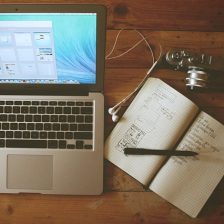The Problem –
A non-tech friend of mine was leaving her current job and had several years worth of data on her company-issued laptop. The night before her last day, she indicated that she needed to get data off of the laptop before turning it in the next morning. Of course, she had no idea what exactly she needed and what folders to look in and had left the power cable of her laptop at her desk at work. Oh yea, and this project started at 10pm at night. (I am NOT making this up!).
The Solution –
Due to the facts that the laptop was on limited power, my friend was putting me in the position of opening each folder and asking, “is this important”, and that I just happened to have my laptop and a USB drive in my car at the time, I felt that taking an image of her laptop was the best route to go. The HDD had about 30gb used, so I figured we needed about 45 minutes worth of juice to handle the laptop. I promise you that going folder to folder would have taken exponentially longer.
So I had a copy of Acronis TrueImage stored in ISO format on my laptop, but needed to burn the CD to boot her laptop up. I’m sure it’s no surprise at this point that we didn’t have any blank CD’s at her house, so we ended up at a grocery store at about 10:30pm and bought a pack of CD’s. I burned the CD on my laptop and we were finally ready to start the image.
There were actually no problems capturing the image of her work laptop with the Acronis tool and we had a complete image within the allotted 45 minutes, and had about 30 minutes of juice to spare on the laptop.
{Fast-forward a month later to when she needed her Outlook contacts list off of her old laptop…..}
I created a new virtual machine with the FREE VMware Server product on my laptop. I mounted the ISO image of the Acronis product and restored the image that we had taken a month before. I then downloaded the now FREE VMware Converter product and ran a P2V conversion on the restored image file. (P2V stands for Physical to Virtual – the act of transforming a system that runs on a physical hardware platform to one that can be encapsulated as a virtual system that can be run on any platform using VMware Server, ESX, or Workstation host software).
We booted the system up on my laptop and all the necessary files were found.
Outline of steps taken:
- Used an imaging tool to take an image of the complete contents of the physical machine’s (laptop) hard drive. ( I used Acronis, but you can use anything that you are used to – Ghost is a popular choice)
- Restored the image to a new virtual machine instance on a VMware Server host.
- Ran VMware Converter to transform the image of the physical laptop to one that could be used in the virtual world.
- As an added bonus, and to reclaim the 30gb that her image took up on my laptop, I moved the virtual machine files to a backup USB drive for safe-keeping. When she needs more data off the drive in the future, we can just fire up the server on any virtual host I have available at the time and we’ll be in business.
This method can be useful not only in scenarios like this, but also:
- As a backup method for critical systems/data
- To retire old hardware while retaining its functionality in a portable instance
- For systems that may only be needed a few times a year to perform a specific task – you do not need to keep a machine up and running if you don’t use it that often!
- For systems that you may never need to use again. It only costs you space on your backup media to cover that “just-in-case” scenario.

Leave a Reply
You must be logged in to post a comment.